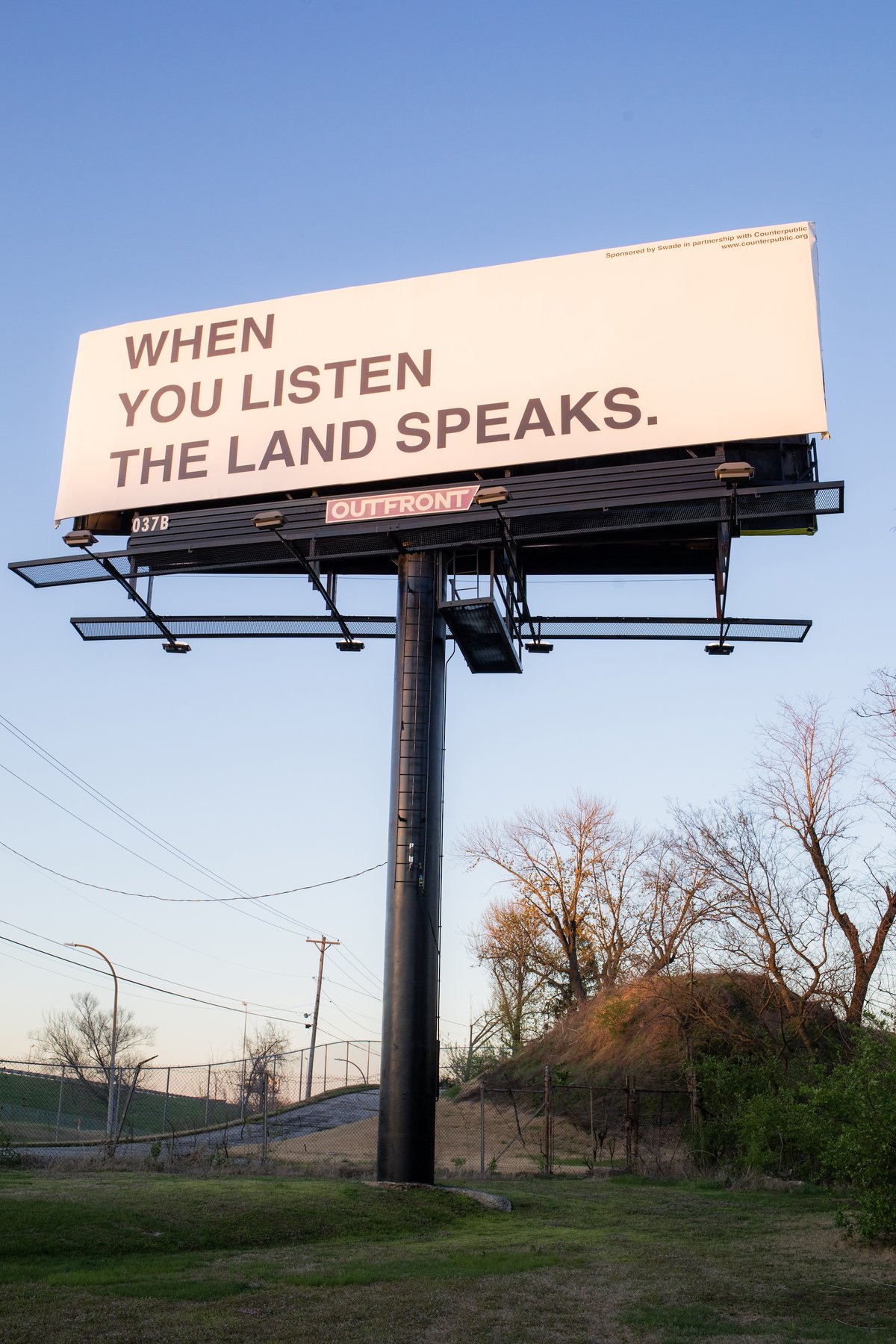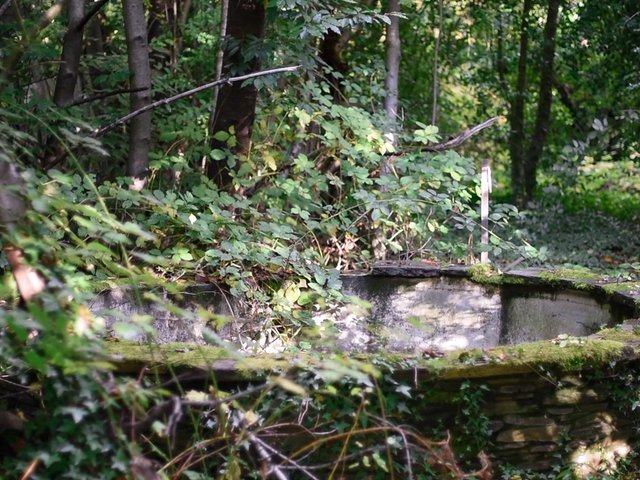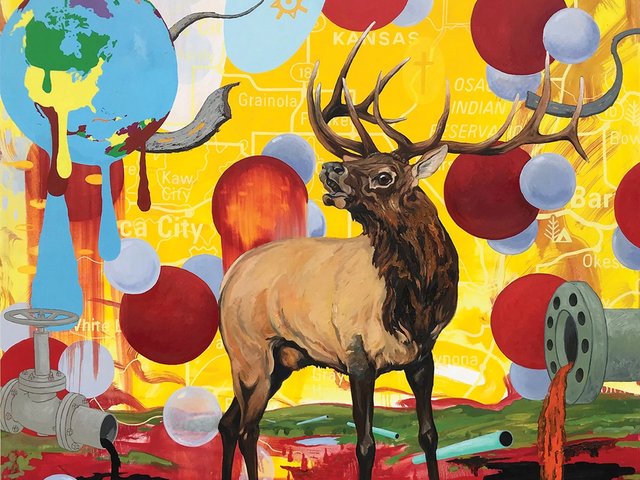The Osage Nation and the arts organisation Counterpublic announced today (21 November) that ownership of part of the historic Sugarloaf Mound—the last remaining Native American earthwork in the city of St Louis—will be transferred to the Osage Nation. The land transfer concerns the second of three tiers of the mound, which had previously been privately owned. In addition to the transfer, a first-of-its kind resolution made by the St Louis Board of Aldermen and the mayor's office acknowledges the tribal sovereignty of the Osage Nation and their ancestral rights to this sacred site. This work is part of broader “Land Back” initiatives aimed at returning sacred lands to Indigenous stewardship.
“We’ve got one small hold on one piece of our property now, and it’s an expression of our tribal sovereignty to be able to regain control over these areas and be able to share within our own community the significance of them and what it meant to us during those time periods that we are very much removed from now,” Andrea Hunter, the director of the Osage Nation’s historic preservation office, tells The Art Newspaper.
Sugarloaf Mound is a thousand-year-old sacred Indigenous site—one of hundreds that once dotted the land near and around the Mississippi River as early as 900 CE. Near modern St Louis, the ancient city of Cahokia served as a major cultural and economic centre of the Mississippian civilisation with an estimated population of 20,000 at its peak. Mounds were ceremonial and burial sites as well as territorial and spiritual markers.
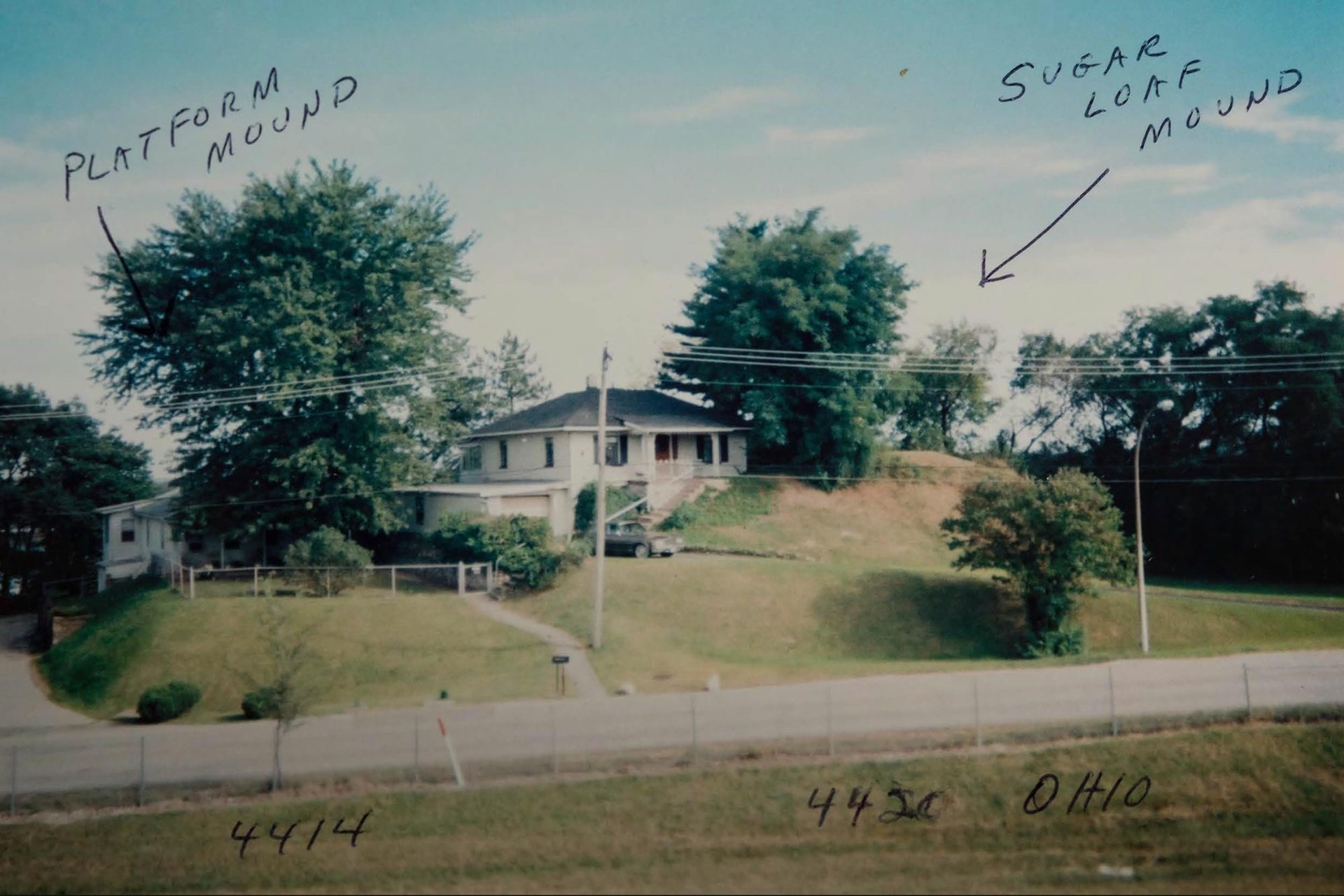
Sugarloaf Mound, from the Heckenberg Family Scrapbook Courtesy of Joan Heckenberg
European settlers nicknamed the area “Mound City” and during the 19th century, as the United States expanded westward, the Osage people were forcibly displaced from the region in a series of land cessions and treaties, a process marked by coercion, betrayal, and violence. The land transfer and resolution are milestones in a campaign the Osage Nation began more than 15 years ago to reclaim and protect the last remaining mound, and a national model for organisations to give land back to Indigenous communities.
“We still exist and we still care about our homeland, because we've got thousands of our ancestors buried there,” Hunter tells The Art Newspaper. “We still very much care about [Sugarloaf] and are working to make those connections to the different types of art that we produced during that time—it’s another avenue that some of our artists here are starting to engage with as well.” The Osage reservation currently sits in Oklahoma despite its origins further south near the Ohio and Mississippi rivers outside St Louis, making this transfer an expansion of their ownership.
In 2009, the Osage Nation bought the northernmost tier of the mound and in 2016, they began restoring the parcel by dismantling the house that had been built on it and moving a planted tree.
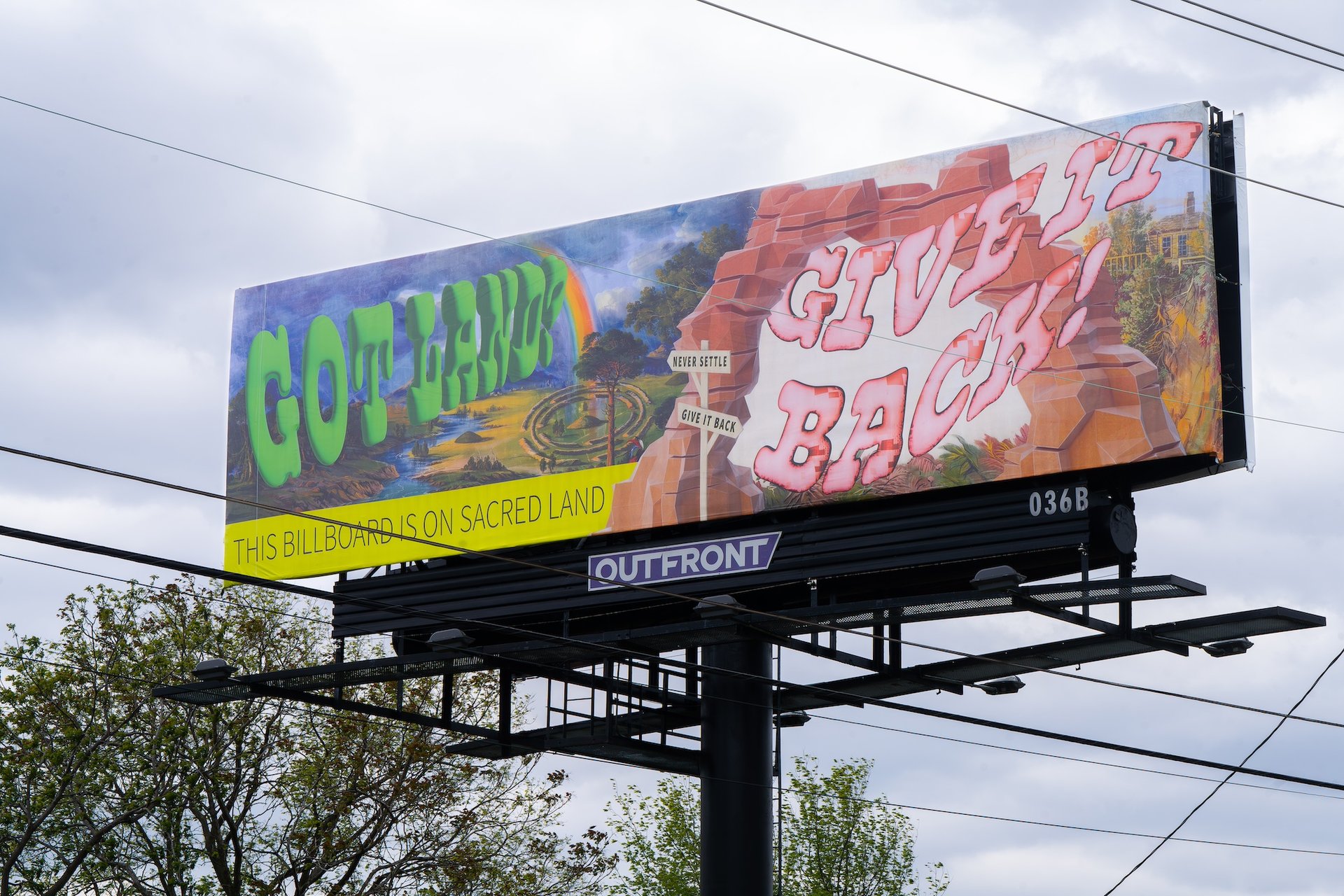
New Red Order, Give it Back: Stage Theory (2023), installation view at Sugarloaf Mound. Commissioned by Counterpublic 2023. Photo: Jon Gitchoff
“At the time of European settlement, there were more than a hundred mounds in the city of St Louis, all of which except [Sugarloaf] were subsequently destroyed through the development of the city,” James McAnally, artistic and executive director of Counterpublic, tells The Art Newspaper. “This is very much generational work. This is the last chance to preserve this history, as well as to set up a Native-lead future, self-determined around this last intact mound in the city.”
Following tribal protocol in 2021, Counterpublic began a three-year collaborative effort to boost the Osage Nation’s preservation plan and to invite artists to further activate the sacred site during the second edition of its triennial in 2023. Sugarloaf Mound was a focal point of the exhibition, with public art installations and performances staged near it. Indigenous artists including Anna Tsouhlarakis, Anita and Nokosee Fields, and the art collective New Red Order (NRO) worked alongside the Osage Nation and Counterpublic to install works around Sugarloaf and further negotiations with the land’s owner, Joan Hackenburg, who has lived in a house on the property for more than 80 years.
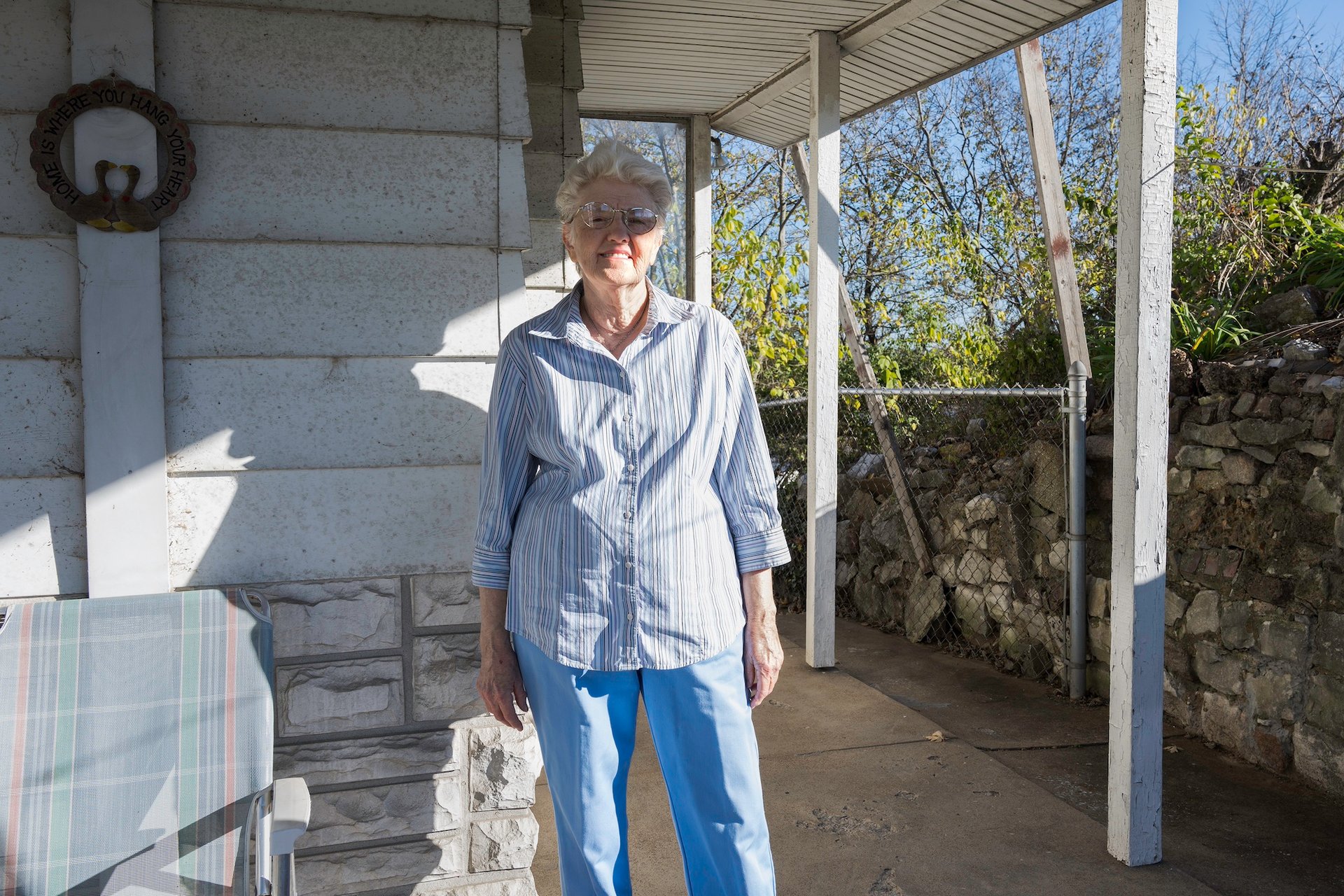
Homeowner Joan Heckenberg stands in front of her house on Sugarloaf Mound. Photograph by Jennifer Colten. Courtesy of Counterpublic
"Part of the model of taking good care is less about Counterpublic and more about an exhibition that can allow us to see a city differently, explore its futures through invitation and thinking about art so that it creates reimagining and revitalising." Lee Broughton, the co-founder and president of Counterpublic, tells The Art Newspaper.
The resolution from the city also marks an ongoing effort to lobby the St Louis chapter of Kappa Psi, a national pharmaceutical fraternity that owns the third, base tier of the mound and has opposed returning the property to the Osage Nation.
According to Hunter, plans for the land include building an interpretive centre as an educational component for the tribe to share its history with members in Missouri and neighbouring Illinois, in addition to the greater public. “We were there for hundreds of years, our footprint is all over that landscape and the majority of the public has no clue whatsoever about it,” Hunter says.


